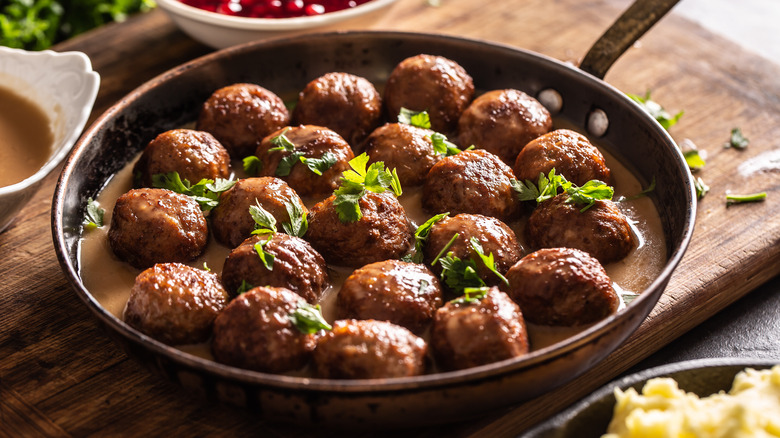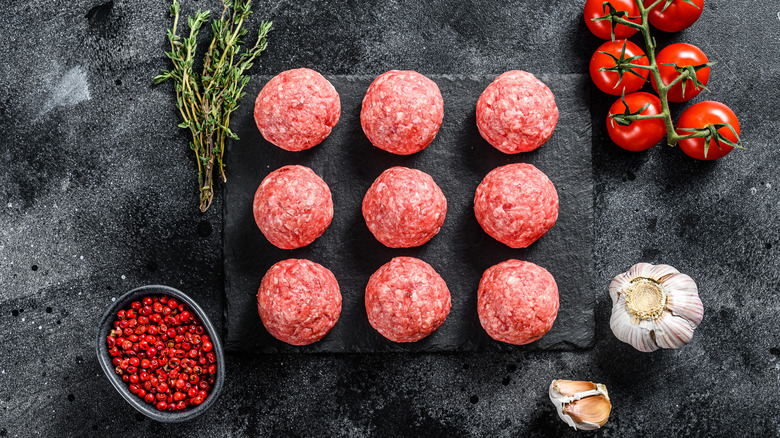The Best Meat-To-Fat Ratio For Homemade Meatballs
Contrary to what their name suggests, meatballs aren't just balls of meat. They also contain breadcrumbs, a variety of herbs and spices, usually eggs, and sometimes extra milk or cream for added moisture. Most recipes call for either beef, veal, pork, or some combination of the three, but no matter which type of meat you decide to go with, it's important that you be mindful of the fat content.
The reason for this, as Bon Appétit shares, is that fat is a key component in meatballs. It is what keeps them juicy, and it also adds another layer of delicious flavor. Without it, your meatballs will turn out crumbly and bland, no matter how much sauce you pile on top.
Meatball expert Daniel Holzman shared with First We Feast that you can either choose your ground meat by its fat percentage or if you're using less fatty meat like turkey or chicken, add pork belly to control the amount better.
It depends on the type of meat you use
Generally speaking, you want to aim for 70% meat to 30% fat, First We Feast says. This ratio, however, varies depending on what type or cut of meat you use. Cookbook author Anya Ferald shared to The Kitchn that half pork and half beef is the safest option because pork is naturally fatty. Pork is usually around 60% meat to 40% fat, so even if you combine it with 100% lean beef, your meatballs will still contain enough fat. Veal that's 70% meat and 30% fat can substitute for 100% lean beef as long as you mix it with pork.
Per First We Feast, if chicken or turkey is your meat of choice, opt for chicken thighs instead of breasts. Then when you grind it, keep the skin on for the additional fat content. Once you achieve that 70:30 ratio, you can make the best homemade meatballs yet.

